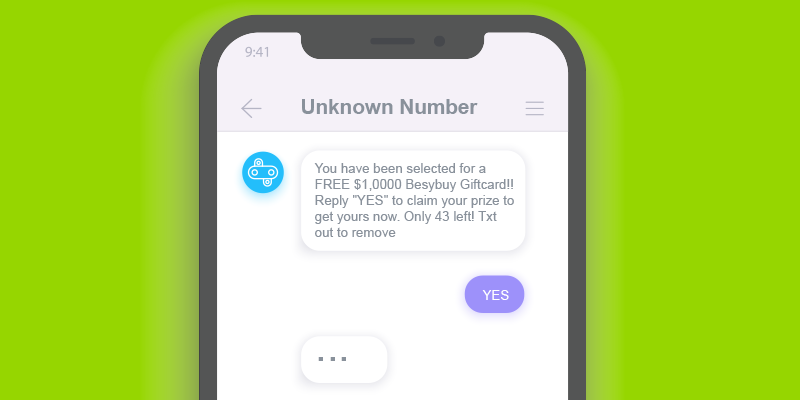Text messages are now a common way for people to engage with brands and services, with many now preferring texts over email. But today’s scammers have taken a liking to text messages or smishing, too, and are now targeting victims with text message scams sent via shortcodes instead of traditional email-based phishing attacks.
What do we mean by shortcodes
Businesses typically use shortcodes to send and receive text messages with customers. You’ve probably used them before—for instance, you may have received shipping information from FedEx via the shortcode ‘46339’. Other shortcode uses include airline flight confirmations, identity verification, and routine account alerts. Shortcodes are typically four to six digits in the United States, but different countries have different formats and number designations.
The benefits of shortcodes are fairly obvious. Texts can be more immediate and convenient, making it easier for customers to access links and interact with their favorite brands and services. One major drawback, however, is the potential to be scammed by a SMS-based phishing attack, or ‘Smishing’ attack. (Not surprisingly given the cybersecurity field’s fondness for combining words, smishing is a combination of SMS and phishing.)
All the Dangers of Phishing Attacks, Little of the Awareness
The most obvious example of a smishing attack is a text message containing a link to mobile malware. Mistakenly clicking on this type of link can lead to a malicious app being installed on your smartphone. Once installed, mobile malware can be used to log your keystrokes, steal your identity, or hold your valuable files for ransom. Many of the traditional dangers in opening emails and attachments from unknown senders are the same in smishing attacks, but many people are far less familiar with this type of attack and therefore less likely to be on guard against it.
Text messages from shortcodes can contain links to malware and other dangers.
Smishing for Aid Dollars
Another possible risk in shortcodes is that sending a one-word response can trigger a transaction, allowing a charge to appear on your mobile carrier’s bill. When a natural disaster strikes, it is common for charities to use shortcodes to make it incredibly easy to donate money to support relief efforts. For instance, if you text “PREVENT” to the shortcode 90999, you will donate $10 USD to the American Red Cross Disaster Relief Fund.
But this also makes it incredibly easy for a scammer to tell you to text “MONSOON” to a shortcode number while posing as a legitimate organization. These types of smishing scams can lead to costly fraudulent charges on your phone bill, not to mention erode aid agencies ability to solicit legitimate donations from a wary public. A good resource for determining the authenticity of a shortcode in the United States is the U.S. Short Code Directory. This site allows you to look up brands and the shortcodes they use, or vice versa.
Protect yourself from Smishing Attacks
While a trusted mobile security app can help you stay protected from a variety of mobile threats, avoiding smishing attacks demands a healthy dose of cyber awareness. Be skeptical of any text messages you receive from unknown senders and assume messages are risky until you are sure you know the sender or are expecting the message. Context is also very important. If a contact’s phone is lost or stolen, that contact can be impersonated. Make sure the message makes sense coming from that contact.



